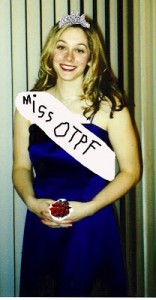Framework-III for OT Students/Practitioners, Cheatsheet
The newly updated Occupational Therapy Practice Framework: Domain and process, 3rd edition, otherwise known as the Framework-III is an important document provided by the American Occupational Therapy Association, and all therapists and students should be intimately familiar with it. Figuratively. Only figuratively. I have slept with it though. Literally, in OT school, I fell asleep with the first edition more than once. That’s why they called me Miss OTPF. We had a Miss OTPF pageant too, but the opposite of occupation-based in true parody style! Anyway. Moving on. Now that I am back in school for my post-professional clinical doctorate in occupational therapy (OTD), the Framework-III and I are once again sharing a pillow, and I’m putting my crown back on, deserved or not.
The true framework is quite long, so this just gives you a cheatsheet taste of categories/terminology. Here’s a 1- page PDF of this outline of the Framework-III. FrameworkOutline.pdf
Occupational Therapy Practice Framework: Domain and Process, 3rd ed., (abbreviated/referred to as Framework-III)
An official document provided by AOTA, summarizing occupational therapy’s unique approach to healthcare. Our domain focuses on “achieving health, well-being, and participation in life through engagement in occupation,” through a vision of “occupation based, client centered, contextual, and evidence based” care.
OTs must evaluate a client holistically and deductively with an “occupational profile”, using below categories as guidelines, before determining intervention approach.
Clients can refer to persons, groups, and populations [newly expanded definition]
Occupations (meaningful life activities that clients engage in)
- Activities of Daily Living (ADL) – (personal hygiene, bathing, sexual activity, etc.)
- Instrumental Activities of Daily Living (IADL) (care of others, community mobility, financial management, shopping, safety, etc.)
- Rest and Sleep, Education, Work, Play, Leisure, and Social Participation
Client Factors (reside within client and influence client’s performance in occupations)
- Body Functions, Body Structures, Values, beliefs, and spirituality
Performance Skills (observable actions with a functional purpose)
- Motor skills (observed physical interactions, i.e. reaching, bending, manipulating)
- Process skills (observed “executive functioning” during a task, i.e. initiating, sequencing, gathering, problem-solving)
- Social interaction skills (observed during social interactions, i.e. transitions, gesticulations)
Performance patterns (behaviors related to activities of daily life)
- Habits, Routines, Rituals, Roles
Context (environmental conditions that may affect client’s performance)
- Cultural, personal, physical, social, temporal, virtual
*Please see reference for comprehensive details in each area. Use this brief handout at your own risk!
Example of citation in-text: We used the Occupational Therapy Practice Framework: Domain and Process, 3rd ed., ([Framework-III], AOTA, 2014) for our project. The Framework-III (AOTA, 2014) is awesome.
Reference: American Occupational Therapy Association. (2014). Occupational therapy practice framework: Domain and process (3rd ed.). American Journal of Occupational Therapy, 68(Suppl. 1), S1-S48.


